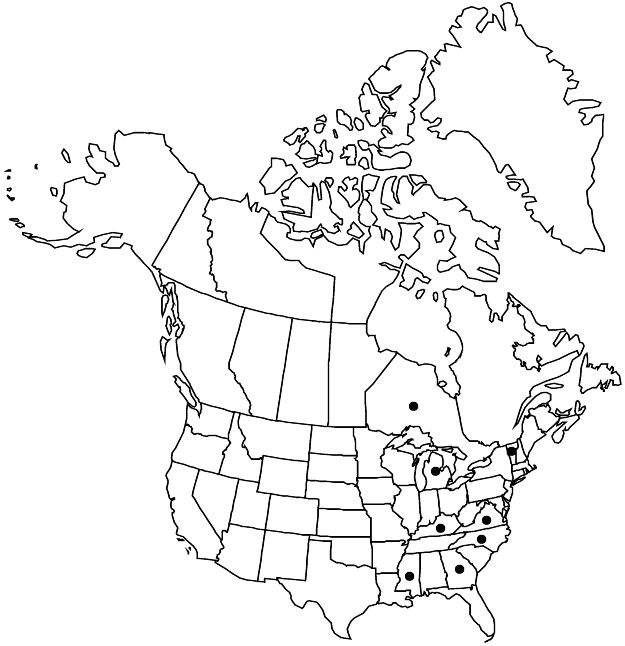Difference between revisions of "Spiraea salicifolia"
Sp. Pl. 1: 489. 1753.
FNA>Volume Importer |
imported>Volume Importer |
||
| (One intermediate revision by the same user not shown) | |||
| Line 32: | Line 32: | ||
|elevation=0–300 m | |elevation=0–300 m | ||
|distribution=Ont.;Ga.;Ky.;Mich.;Miss.;N.C.;Vt.;Va.;e Europe;e Asia;introduced also in w;c Europe. | |distribution=Ont.;Ga.;Ky.;Mich.;Miss.;N.C.;Vt.;Va.;e Europe;e Asia;introduced also in w;c Europe. | ||
| + | |introduced=true | ||
|discussion=<p><i>Spiraea salicifolia</i> is escaped from cultivation in northeastern North America. K. Sax (1936) reported a specimen of <i>S. salicifolia</i> as tetraploid; it is possible that it was not a European specimen, so this count may be unreliable.</p><!-- | |discussion=<p><i>Spiraea salicifolia</i> is escaped from cultivation in northeastern North America. K. Sax (1936) reported a specimen of <i>S. salicifolia</i> as tetraploid; it is possible that it was not a European specimen, so this count may be unreliable.</p><!-- | ||
--><p>The name <i>Spiraea salicifolia</i> is often misapplied to individuals of <i>S. alba </i>var.<i> alba</i> or <i>S. alba </i>var.<i> latifolia</i> (see discussion above). In addition, being a cultivated species that has been popular in gardens and likely introduced and escaped in various hybridized forms, the intermediates and potential hybrids with native taxa can make identification difficult. For problematic specimens that appear to be hybrids, see A. J. Silverside (1988, 1990).</p> | --><p>The name <i>Spiraea salicifolia</i> is often misapplied to individuals of <i>S. alba </i>var.<i> alba</i> or <i>S. alba </i>var.<i> latifolia</i> (see discussion above). In addition, being a cultivated species that has been popular in gardens and likely introduced and escaped in various hybridized forms, the intermediates and potential hybrids with native taxa can make identification difficult. For problematic specimens that appear to be hybrids, see A. J. Silverside (1988, 1990).</p> | ||
| Line 57: | Line 58: | ||
|publication year=1753 | |publication year=1753 | ||
|special status=Introduced | |special status=Introduced | ||
| − | |source xml=https:// | + | |source xml=https://bitbucket.org/aafc-mbb/fna-data-curation/src/2e0870ddd59836b60bcf96646a41e87ea5a5943a/coarse_grained_fna_xml/V9/V9_671.xml |
|subfamily=Rosaceae subfam. Amygdaloideae | |subfamily=Rosaceae subfam. Amygdaloideae | ||
|tribe=Rosaceae tribe Spiraeeae | |tribe=Rosaceae tribe Spiraeeae | ||
Latest revision as of 22:58, 5 November 2020
Shrubs, 10–20 dm, thicket forming. Stems erect to ascending or spreading, rarely branched. Leaves: petiole 2–6 mm; blade narrowly rhombic to rhombic or lanceolate to narrowly elliptic, usually widest at middle, 3–7 × 1–3 cm, length 3–5 times width, chartaceous, base acute, margins sharply serrate to serrulate nearly to base, number of primary and secondary serrations 1 times number of secondary veins (excluding inter-secondary veins), venation pinnate craspedodromous, secondary veins not prominent, regularly terminating in primary teeth, inter-secondary veins usually 1–4 per leaf, apex acute, abaxial surface mostly puberulent, adaxial glabrous. Inflorescences mostly terminal, cylindric to obconic panicles, 5–10 × 2–4 cm height 2–5 times diam.; branches sometimes in axils of leaves, puberulent or glabrous. Pedicels 3–6 mm, puberulent or glabrous. Flowers 4–7(–10) mm diam.; hypanthia hemispheric, 0.8–1 mm, abaxial surface glabrous or sparsely puberulent, adaxial glabrous; sepals ovate, 0.8–1 mm; petals pink, elliptic to widely obovate, 1.8–2 mm; staminodes 0; stamens 28–32, 2 times petal length. Follicles oblanceoloid, 4 mm, glabrous, adaxial suture glabrous or ciliate.
Phenology: Flowering Jun–Aug; fruiting Jun–Sep.
Habitat: Old homesteads in moist areas, flood plains
Elevation: 0–300 m
Distribution

Introduced; Ont., Ga., Ky., Mich., Miss., N.C., Vt., Va., e Europe, e Asia, introduced also in w, c Europe.
Discussion
Spiraea salicifolia is escaped from cultivation in northeastern North America. K. Sax (1936) reported a specimen of S. salicifolia as tetraploid; it is possible that it was not a European specimen, so this count may be unreliable.
The name Spiraea salicifolia is often misapplied to individuals of S. alba var. alba or S. alba var. latifolia (see discussion above). In addition, being a cultivated species that has been popular in gardens and likely introduced and escaped in various hybridized forms, the intermediates and potential hybrids with native taxa can make identification difficult. For problematic specimens that appear to be hybrids, see A. J. Silverside (1988, 1990).
Selected References
None.